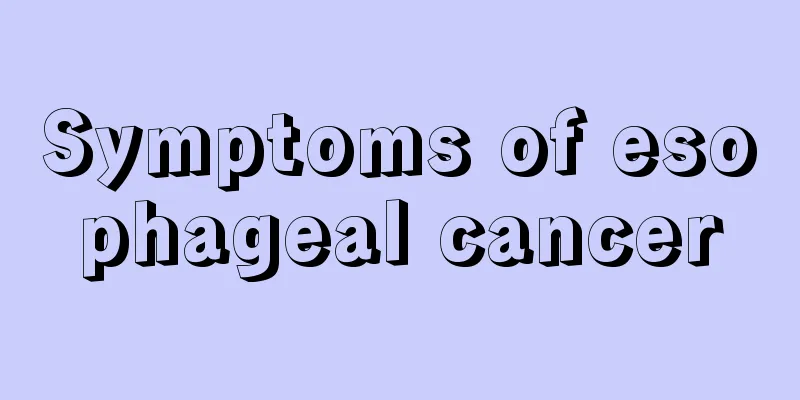What are the routine examination methods for liver cancer? If you have these symptoms, be careful that it is liver cancer

|
Surveys show that the incidence of fatty liver, a disease of affluence, exceeds 20% in Shanghai and Guangzhou. It is no longer simply defined as a benign disease, but can also be the culprit of liver cancer, just like viral hepatitis. Fatty liver is divided into two categories: alcoholic and non-alcoholic. Currently, non-alcoholic is the main type. Follow-up shows that about 15-25% of patients with non-alcoholic fatty liver will develop cirrhosis within 10-20 years. Data show that the highest rate can reach 37.5%. If the disease continues to develop, more than half of the patients may develop liver cancer. The accumulation of fat in the liver is proportional to body weight. Half of obese people may have mild fatty liver, and the incidence rate in severely obese people can reach 61% to 80%. Studies have found that obese people are about 2 to 4 times more likely to develop liver cancer than those with normal weight. It can be seen that controlling weight can reduce the risk of fatty liver, thereby reducing the risk of liver cancer. What symptoms indicate the onset of liver cancer? Enlarged liver in patients with early liver cancer: Although most of the early symptoms of liver cancer patients are not obvious, many patients will experience pain in the right upper abdomen and enlarged masses in the upper abdomen after the onset of the disease. Most patients are middle-aged or elderly, and most of them are middle-aged patients. Therefore, people must pay attention to it. Typical clinical symptoms of early liver cancer: Generally, the cause of liver cancer is due to chronic liver disease, so patients will also have some symptoms due to these inflammations before canceration. Generally, there will be a feeling of distension and pain in the upper abdomen and liver area, and the symptoms will generally worsen after eating. Who are the high-risk groups for liver cancer? 1. People with a family history of liver cancer: On the one hand, many hereditary diseases that damage the liver, such as pigmentation disease and glycogen storage disease, will develop into cirrhosis, and the incidence of liver cancer is also very high; on the other hand, it is believed that the familial clustering of liver cancer is mainly caused by the clustering of hepatitis B virus. There is currently no evidence that liver cancer can be inherited. 2. Patients with post-hepatitis cirrhosis: More than 50% of patients with cirrhosis develop cancer, and most of them have recurrent illness, poor improvement in liver function, and frequent complications such as ascites. 3. People living in liver cancer high-incidence areas: China's liver cancer high-incidence areas are mainly in the southeastern coastal areas, such as Fusui and Longan in Guangxi, Xiamen and Tongan in Fujian, Qidong and Haimen in Jiangsu, Chongming and Nanhui in Shanghai, etc. In these areas, at least 30 people die of liver cancer per 100,000 people on average. In addition, the incidence of liver cancer is higher in coastal areas than in inland areas, and higher in southeast and northeast areas than in southwest and northwest areas. 4. People living in difficult conditions: The occurrence of liver cancer has an occupational characteristic, and farmers have the highest incidence and mortality rates. Some people say that in China, liver cancer and stomach cancer are diseases caused by poverty, and people with poor economic conditions are more likely to suffer from "liver cancer", which makes sense. 5. Unhealthy drinking water: Water is an important substance for maintaining the normal survival of human organisms. Water itself certainly does not cause tumors, but epidemiological surveys have shown that the degree of drinking water pollution is positively correlated with the incidence of liver cancer. This undoubtedly indicates that there are carcinogens in the water source, and it may be the combined effect of multiple carcinogens, such as humic acid, blue-green algae toxins, etc. What are the routine examination methods for liver cancer? 1. B-ultrasound examination: B-ultrasound examination is the most commonly used examination for diagnosing early liver cancer. The characteristics of ultrasound are that it is relatively easy to operate, the cost is relatively low, and the detection rate for most liver space-occupying lesions is high. 2. CT examination: Chest CT is a very important method for liver cancer examination. It can show whether the cancer has invaded adjacent organs and large blood vessels. The accuracy of the localization diagnosis of liver cancer can reach more than 90%, but chest CT examination still cannot confirm the diagnosis. 3. Magnetic resonance imaging (MRI): MRI is a rapidly developing examination method in recent years. In the past, MRI was not as ideal as CT. Now, with the continuous development of MRI technology, the scanning time is getting faster and faster, and the resolution is getting higher and higher. It also plays a very important role in the examination of liver cancer. 4. Liver tissue biopsy or cytology examination: It can be performed under the guidance of B-ultrasound or CT. Percutaneous liver puncture needle aspiration biopsy can directly detect liver tissue lesions with a positive rate of more than 80%. Early detection and early diagnosis are the key to achieving good results in the treatment of liver cancer. Patients and doctors must work closely together and use the necessary instruments and equipment mentioned above for examination. 5. Alpha-fetoprotein test: When ultrasound and/or CT scans are suspected of early liver cancer, an alpha-fetoprotein test is generally recommended for auxiliary diagnosis. Alpha-fetoprotein test is also one of the most common tests to see if there are tumor markers and to understand the reason for the high carcinoembryonic antigen. However, patients with low alpha-fetoprotein levels cannot completely rule out the possibility of liver cancer. |
Recommend
What to do if my ear is scratched and water is flowing
Ears are one of the five senses that we cannot ig...
Can people with kidney yin deficiency eat barley porridge
Can people with kidney yin deficiency eat barley ...
What supplements are good to take after having a heart stent installed?
Heart disease is extremely destructive to people&...
What harm does rubber do to the human body
Rubber products are very common in our lives. Bec...
What does an ant bite look like
Ants are a common insect in nature. Generally, an...
What kind of food is suitable for patients with fibroids
What kind of food is suitable for patients with f...
What disease might cause the body to become thinner
For the body, a stable state is a healthy state. ...
What to eat for bronchial cough
Speaking of coughing, everyone should have a deep...
What disease is purple urine
Under normal circumstances, human urine should be...
The difference between toner and toner
There are many kinds of skin care products for wo...
Was there any harm in working night shifts last month?
Night is the time for people's bodies and var...
People with this ear have good luck
Ears cannot represent wealth, but they can reflec...
Symptoms after breast cancer chemotherapy
Breast cancer patients may experience some corres...
Is it better to take a bath with hot water or cold water?
Once the hot summer comes, we need to take a show...
How to get rid of fleas on your body
I don’t know if you have seen fleas in your life....









